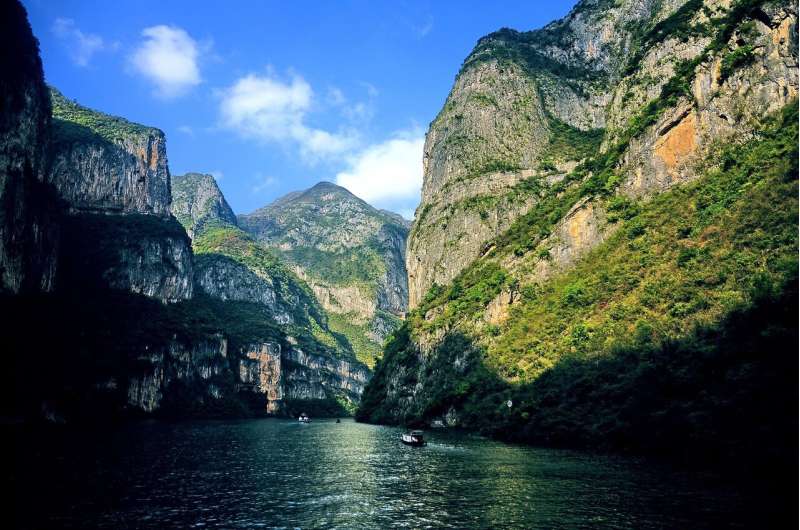Scientists develop new land surface model to monitor global river water environment

Climate change and human activities, including heat emission, nitrogen (N) emission and water management, are altering the hydrothermal condition and N transport in the soil and river systems, thereby affecting the global nitrogen cycle and water environment.
"We need to assess the impacts of these human activities on global river temperature and riverine N transport," said Prof. Xie Zhenghui from the Institute of Atmospheric Physics of the Chinese Academy of Sciences. "Quantitative assessment can not only improve our understanding of the material and energy cycle that occur in response to anthropogenic disturbances, but also contribute to protecting river ecosystems."
Xie and his collaborators from the Chinese Academy of Sciences incorporated the schemes of riverine dissolved inorganic nitrogen (DIN) transport, river water temperature, and human activity into a land surface model, and thus developed a land surface model CAS-LSM. They applied the model to explore the impacts of climate change and anthropogenic disturbances on global river temperature and DIN transport.
"We found that the water temperature of rivers in tropical zones increased at about 0.5°C per decade due to climate change from 1981 to 2010, and the heat emission of the once-through cooling system of thermal power plants further warmed the temperature. In Asia, power plants increased local river temperatures by about 60%," said Dr. Liu Shuang, the lead author of the study published in Global and Planetary Change.
Climate change determined the interannual variability of DIN exports from land to oceans, and water management controlled the retention of DIN by affecting the water cycle and river thermal processes.
"From the perspective of anthropogenic N emission, we found the riverine DIN in the U.S. was affected primarily by N fertilizer use, the changes in DIN fluxes in European rivers was dominated by point source pollution, and rivers in China were seriously affected by both fertilization and point source emission," said Dr. Wang Yan, the lead author of the team's study published in Journal of Advances in Modeling Earth Systems.
In general, the results indicated that incorporating schemes related to nitrogen transport and human activities into land surface models could be an effective way to monitor global river water quality and diagnose the performance of the land surface modeling.
This series of studies have been published in Global Change Biology, Global and Planetary Change, Journal of Advances in Modeling Earth Systems and other journals. One of the papers is highlighted by Nature Climate Change.
More information: Baird Langenbrunner. Power plants warm rivers, Nature Climate Change (2020). DOI: 10.1038/s41558-020-00928-0
Yan Wang et al. Effects of anthropogenic disturbances and climate change on riverine dissolved inorganic nitrogen transport, Journal of Advances in Modeling Earth Systems (2020). DOI: 10.1029/2020MS002234
Shuang Liu et al. Global river water warming due to climate change and anthropogenic heat emission, Global and Planetary Change (2020). DOI: 10.1016/j.gloplacha.2020.103289
Shuang Liu et al. Effects of anthropogenic nitrogen discharge on dissolved inorganic nitrogen transport in global rivers, Global Change Biology (2019). DOI: 10.1111/gcb.14570
Journal information: Global Change Biology , Nature Climate Change
Provided by Chinese Academy of Sciences




















